
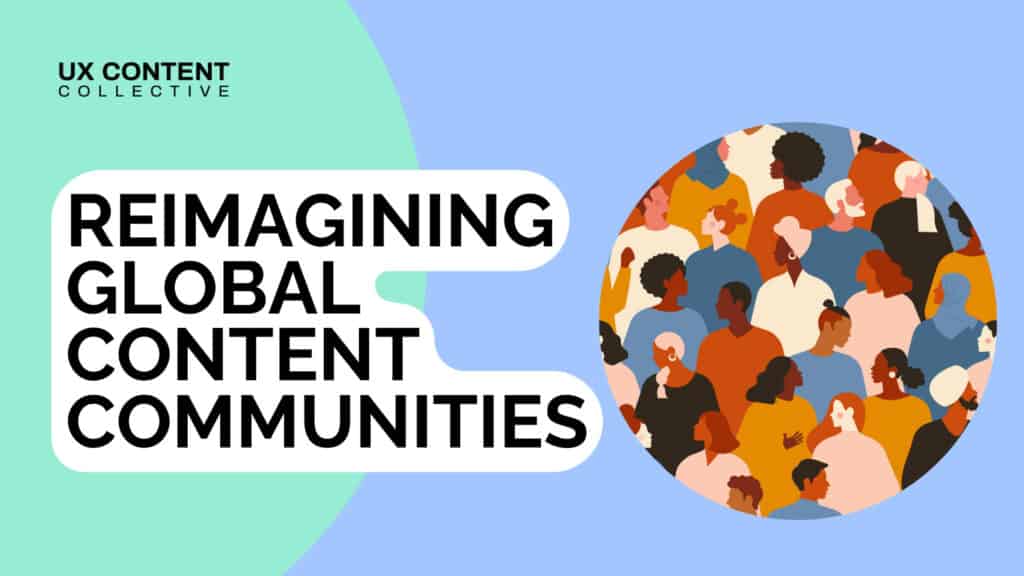
The Content Design (aka Content Strategy, or UX writing) community started forming in the early 2000s. When the first content-related gatherings happened offline in 2008 (source) in North America, the attendees likely spoke the same language, had a similar cultural background, and had no problems understanding each other.
Today, there are multiple communities all over the world, content meetups online and offline, and enough books to open a small library. The global content design community is more diverse than ever, but it struggles with inclusion due to language barriers, tech issues, economic gaps, varying time zones, and cultural misunderstandings.
Although the Internet connects us, full participation in our community isn’t equal for all. In this article we’ll take a look at the current situation, list the challenges we face, and explore some potential solutions.
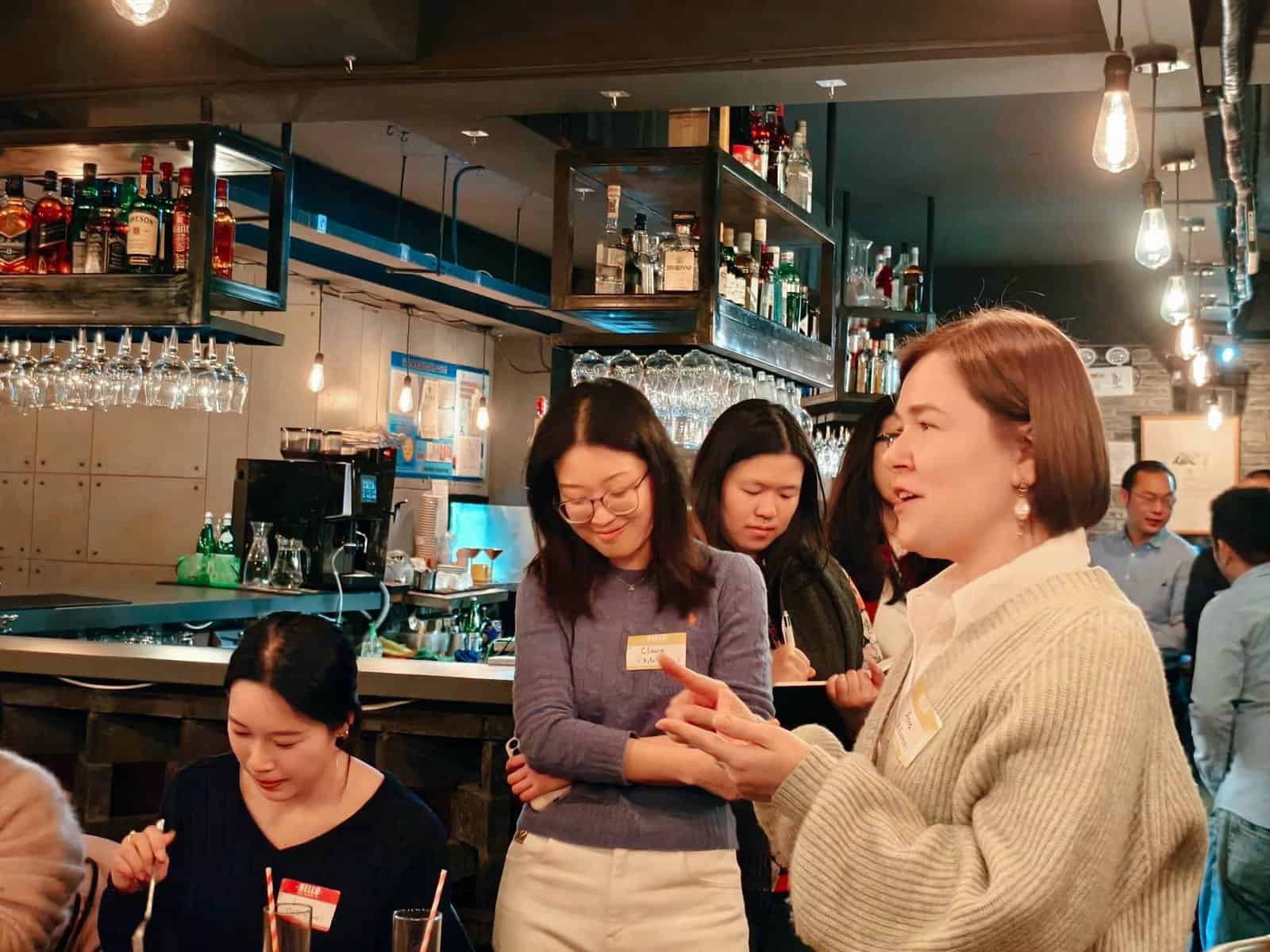
Content Designers China meet up, Shanghai, 2025. Photo by Kay Xu
First: the term ‘global content community’ is meant to describe a group of content design practitioners from all over the world. English is usually the main language of communication, but not necessarily the language used to create content. We’ll use the word ‘global’ as it suggests a broader scope, encompassing the entire world or a significant portion of it, while the word ‘international’ typically refers to interactions or relationships involving two or more countries.
In this article, ‘we’ refers to those who identify as members of this global community, united by the shared knowledge of their craft, but not necessarily their cultural background and/or physical location. We’ll start by looking at some specialized practitioners of Content Design, and how they are able to expand their skills and networks throughout the globe.
Based on a Content Design skills survey conducted by Torrey Podmajersky with about 1000 content designers, 20.8% of practitioners design content in more than 1 language. Now, keep in mind, the survey was in English and was distributed mostly through the channels popular in North America and Europe, so the respondents’ selection might not be very representative. But, that’s at least every 5th content designer at your average online content conference conducted in English.
More and more companies realized the importance of staying relevant with a global audience as well. According to a survey from Unbabel, 89% of marketers in Brazil, France, Germany, Japan, Spain, Sweden, the United Kingdom, and the United States plan to localize content into additional languages. Some of them will not only use machine translation for repetitive, simple copy, but also hire local multilingual content designers to do user research, create job stories, draw wireframes, and advocate for local users.
Likely, we’ll find even more Content Designers around if we include people who design content in languages other than English, have limited English proficiency, or limited means to join conferences. First thing that comes to mind is an online content community of over 10,000 writers working with Russian copy, built by Irina Motorina. There is also KOTOBA UX in Japan, Content Designers China, and many more.
Some of these smaller groups are integrated in the larger global community through especially active or sociable practitioners, whom we can call connectors. Using their networks and communication skills, connectors pass on knowledge from global communities to local ones, and back. A simplified version of this process is shown below.
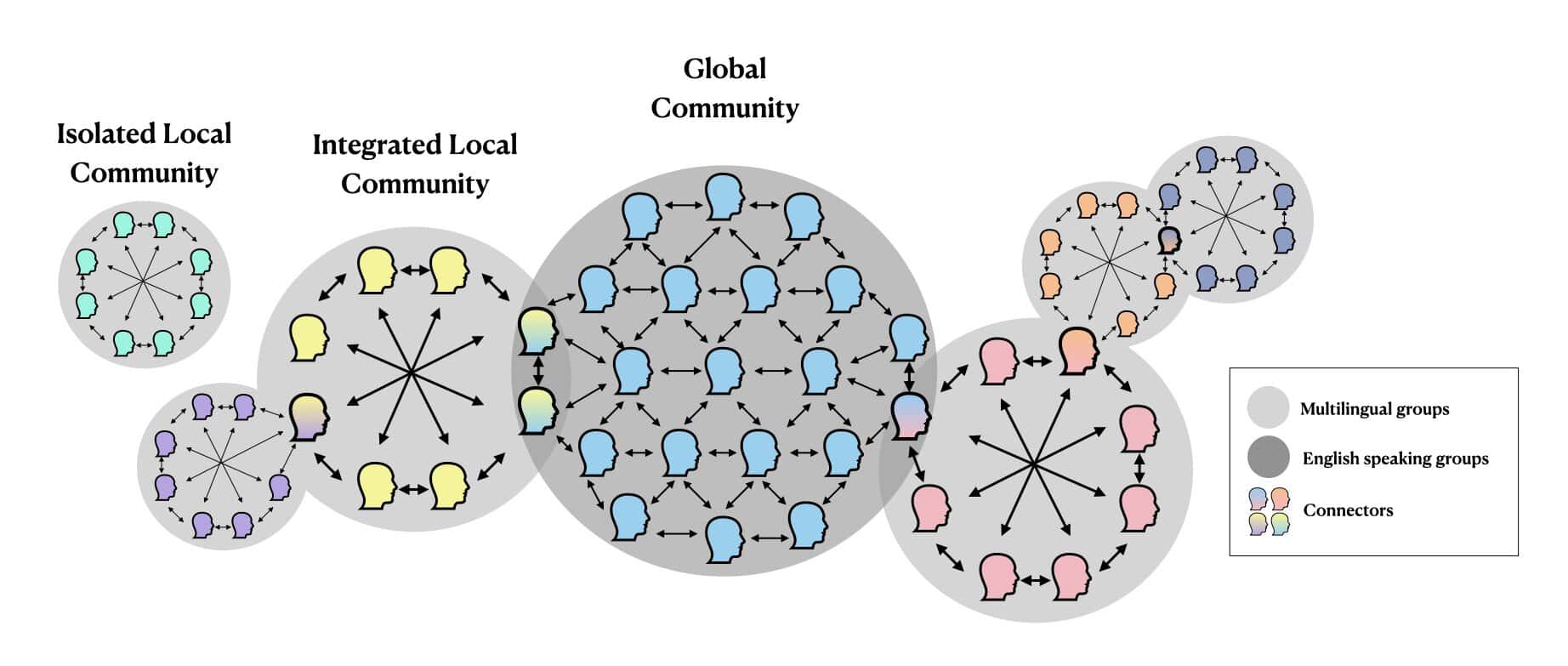 Interactions between communities, diagram by the author
Interactions between communities, diagram by the author
For example, somebody working in China might learn about AI-powered style guides from global community members, and start to implement it in their organization, while sharing the best ways to localize content for the Chinese market with their peers in Europe and US. By adopting new methodologies and new ways of thinking, they have a good chance to advance their career faster, while helping others broaden their knowledge and giving back to the community.
Integrating new voices in the Global Content Community fosters innovation, problem-solving, professional development, and informed decision-making.
But it’s not just the people that make the community work, but also a variety of events and meet-ups, both in person and online. We now have enough Content and UX events all over the world to fill a whole calendar, as Kyra Lee did for UX Content Collective Blog. In addition to the US and Canada, these events take place in Australia, Denmark, Germany, Portugal, Sweden, Switzerland, UK.
Some of these events allow attending online as well. At Growing in Content 2024, the fully online content conference, there were attendees from Cape Town, China, France, Germany, Italy, Malta, Mexico, New Zealand, Nigeria, Russia, South Africa, Ukraine. That’s a level of diversity some might find hard to believe! Unfortunately, there are still some isolated communities that cannot enjoy these benefits due to the challenges they have to face.
Through the Global Content Community and with the help of connectors, we embraced more new voices and perspectives. Still, there are many challenges we have to face.
Communities often congregate in different online spaces. This can be due to factors like government restrictions, such as when X (formerly Twitter) was blocked in Brazil, or simply a personal preference for a particular app or platform. While we may advocate for our work and share knowledge within our established networks, this can limit our reach to people who use different platforms. For instance, sharing articles on BlueSky might be ineffective in reaching peers in China, who may be more active on platforms like Xiaohongshu, a popular Chinese social media and e-commerce platform.
The cost of attending online events can be prohibitive for some community members. For instance, conferences priced according to American income standards may be too expensive for content professionals from countries with lower average incomes or exchange rates. When it comes to offline events, attendees often bear the full cost of travel and accommodation. Unless their employer covers these expenses, many individuals may be unable to attend due to these financial constraints. When corporations are the only actors capable of flying a speaker across the ocean, corporate interests and perspectives can easily become over-represented at the event.
There are two dimensions to the time difference: time on the clock and time on the calendar.
When an event is scheduled around a single time zone, it can be challenging for people to attend if they live in a region with a significant time difference. For those based in Asia or Australia, participating in a European conference often means staying up all night, which isn’t feasible for many people. Some might feel pressured to stay up late or get up early to accommodate the time preferences of the region that hosts an event, which is often the US or Europe.
When it comes to calendars, we can see that there are different holidays in different parts of the world, which affects people’s ability to attend certain events. For example, the first week of October might be a good time for an event in France, as people are back from summer holidays and fully focused on work. The very same week might not be a great timing for a Chinese audience, as the event would overlap with a week-long national day holiday. Many people call this time “golden week” and use it to relax or travel.
When Content Designers from different countries meet, English is their only common language. After all, English is the most widely spoken language in the world (source). If you are born in an English-speaking country, all you need to do to join the community is to show up. For other people, it means learning a whole new language.
As Michael Reid, a DEI (Diversity, Equity and Inclusion) expert puts it, “Your colleagues who don’t have English as a native language do everything you do. They’re just as good at you as your job. You’re excellent at your job. […] They have to be excellent in another language. You just had to show up excellent. They had to show up excellent, having learned your language to get their foot in the door.” So there is an entrance barrier here, and we are likely missing out on a vast amount of knowledge accumulated by the multilingual community members, due to the language barriers.
When English is adopted as a common language between speakers whose native languages are different, it might be easy for English speakers to forget that not everyone in the audience is familiar with US (UK, Australia etc.) culture and daily life. We advocate for products and interfaces that are accessible, inclusive. But heavy reliance on local concepts or jargon can have the opposite effect: make your global audience feel alienated.
Every time we bring up Thanksgiving, Kenan Thompson’s jokes, or a car-related analogy, we are making our speech less accessible for people who never celebrated the North American holiday, watched Saturday Night Live, or drove a car. In a world where a presentation delivered in London can be seen by people in South Africa and Brazil, do we really want to risk making people feel excluded? We cannot talk about being multicultural or accessible while bringing up concepts that might be unfamiliar to our global audience.
One might argue that most people in the world know what Thanksgiving is, thanks to pop culture and TikTok. That might be true; at the same time, Thanksgiving in the US is significantly different from Thanksgiving in Japan. Best case scenario, a Thanksgiving analogy might be misunderstood. Worst case scenario, it might make part of your global audience feel disrespected and marginalized.
As we can see, the global content design community faces several challenges in fostering inclusivity and accessibility. These challenges include language barriers, technical limitations, economic disparities, time zone differences, and lack of cultural awareness. While the internet has enabled greater global connection, many people from diverse backgrounds still face obstacles in participating fully in the global community.
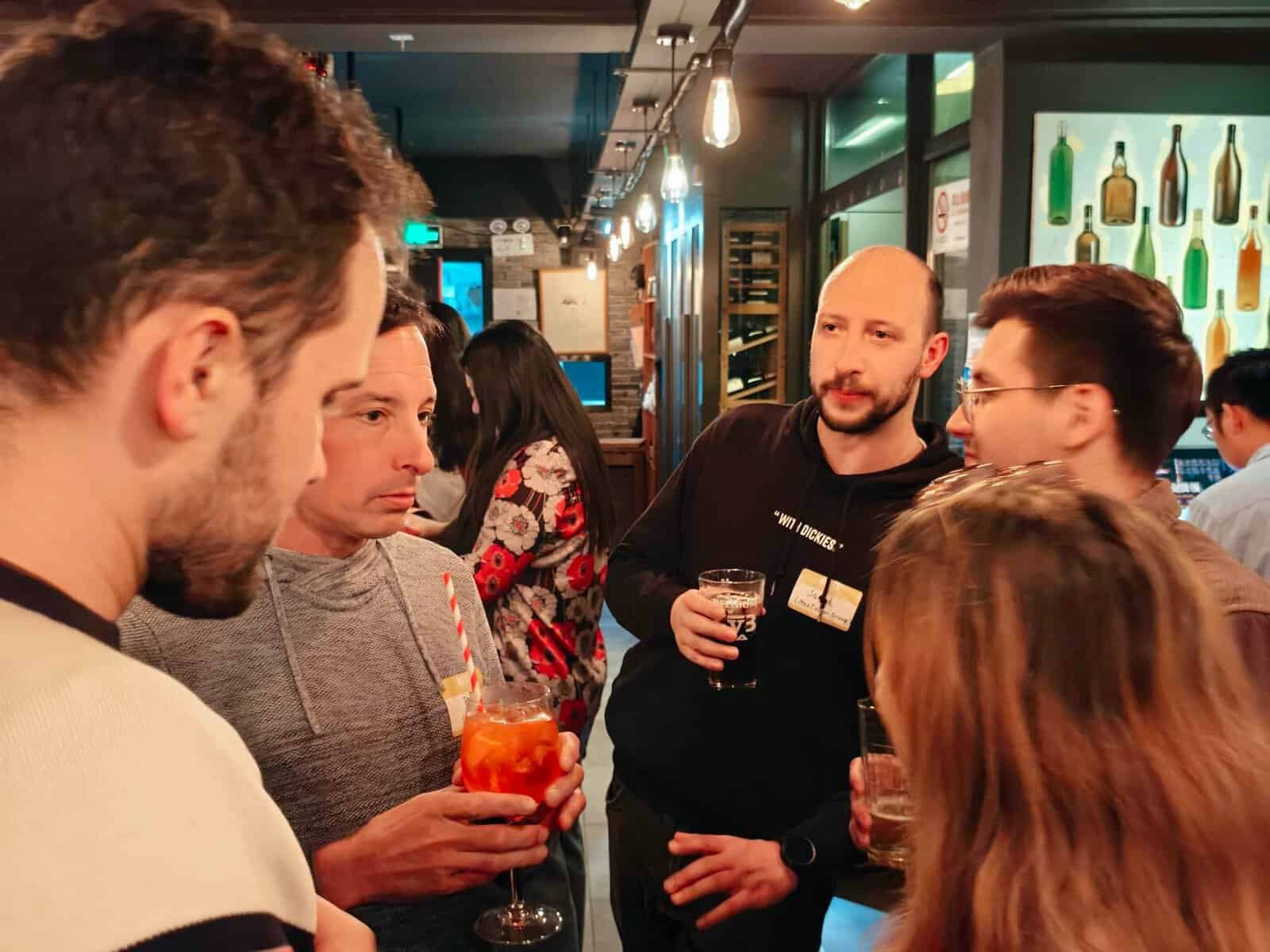
Content Designers China meet up, Shanghai, 2025. Photo by Kay Xu
To create a global community where everyone can feel welcome, regardless of their location or native language, we need to work together, both as organizations and individuals, to address the above-mentioned challenges. The tips provided below do not claim to be an exhaustive guide to action, their purpose is rather to inspire the reader and encourage them to try and experiment, so that we can find the optimal solution together.
Here, we use the term “Coordinators” to describe those individuals or organizations who bring people together and run content-related events for profit, as well as non-profit. While serving an underrepresented audience can foster the sense of belonging and living by their diversity values for non-profits, it also has a clear positive effect on one’s business. By being more inclusive, you attract new customers who now might sign up for your newsletter, register for your workshop, buy your book or a writing course. To quote a DEI adviser Dr. Rohini Anand: “If you are not sensitive to providing culturally competent customer service for this particular marginalized group, you may be missing out on a whole segment of a customer population”.
Encourage presenters to explicitly define or explain any terms, concepts, or references that may be unfamiliar to a non-local audience. Providing brief historical or contextual information can go a long way in making content accessible. One can also develop a comprehensive set of guidelines and checklists for presenters that highlight common localisms, encourage the use of universal terminology, and advise on culturally neutral examples.
You can even invite volunteers with a wide range of backgrounds, cultures, and expertise to review some of the presentations. This way you can be sure to avoid locally-specific language, as well as cultural sensitivities that might be overlooked otherwise. Plus, your volunteers can get first-hand access to premium content. It’s a win-win!
One of the ways to address financial constraints tied to attending content events is to provide scholarship to members of the global audience. There are already initiatives like The Button Equity Scholarship program that aim “to expand conference attendance to people whose experiences are marginalized due to systemic oppression and exclusion.” Having such programs extended would greatly benefit the global community.
By translating prominent documents and text, one can make their content more accessible to people who don’t speak English. A great example to bring up here is another project initiated by Torrey Podmajersky, The Content Design Manifesto. At the time of this writing, it has been translated into 29 languages.
There are many ways to overcome time differences. You can spread your conference over several days and schedule sessions at different times each day. This approach can help cover more time zones without requiring anyone to stay up excessively late or wake up too early consistently. Another solution is to have a live event taking place in a specific time zone, and organizing meet-ups in other time zones with the speaker present.
Many prominent content conferences already offer live-streaming of all sessions and record them for on-demand viewing later. Having a post-conference summary & recap can also ensure that even those who couldn’t attend still feel included and informed.
Design your call for proposals to encourage applications from underrepresented groups. Clearly state your commitment to diversity and inclusion, and consider offering assistance such as proposal writing workshops or mentorship programs to help first-time speakers. When inviting speakers, clearly communicate your intention to cover all expenses related to their participation, including travel, accommodation, meals, and any necessary accessibility accommodations. This removes financial barriers that might otherwise deter some speakers.
To make our community more inclusive, community coordinators might find it beneficial to check presentations for clear language, include scholarships for global attendees, make important documents available in different languages, consider time differences and invite speakers with diverse backgrounds. By doing so, we will create a sense of belonging for those members of your audience who might feel excluded otherwise.
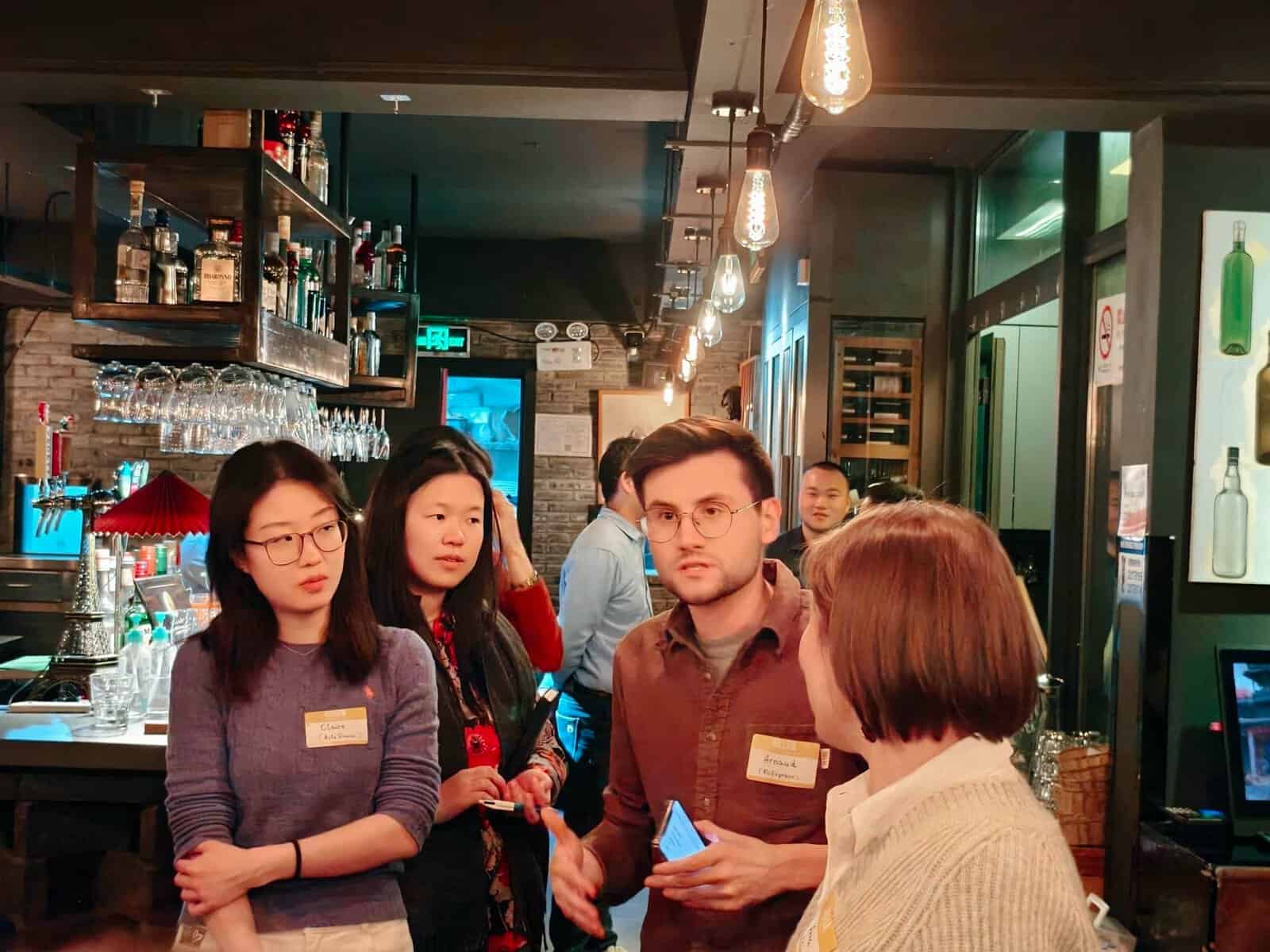
Content Designers China meet up, Shanghai, 2025. Photo by Kay Xu
Being an advocate and supporter for underrepresented groups in the content community empowers individual contributors to live by their values of diversity, equity, and inclusion, broaden their network and get access to new local practices and know-how. There are few things that we can do to bring about change and advocate for diversity: know our biases, use clear language, learn foreign languages, support connectors, become a connector or an advocate.
Be aware of the fact that your culture is not the only culture, your way of working is not the only way to get things done. Even some “foundational” design principles can vary per country: just look at China throwing “less is more” out of the window and creating jam-packed interfaces that work great for their audience. We don’t know what we don’t know, so we need to constantly educate ourselves. Learn about other cultures (Culture Map by Erin Meyer can be a good place to start). Make friends with your foreign colleagues if possible. Follow a Korean vlogger (Claire Luvcat is extremely fun and inspiring, but feel free to look around too).
It only takes a few extra minutes to make your English presentation, article, or speech more accessible for the global audience. A few minutes that can make a difference between setting a new standard for accessibility and staying where you are. You just need to show empathy, define your terminology, and use plain language. Avoid references to holidays or customs that are too country-specific, and replace them with something less ambiguous. To quote Sarah Winters, “it’s not dumbing down, it’s opening up.”
Learning is a very humbling and vulnerable experience. As we enter a new cultural space, we willingly place ourselves in the position of an outsider when interacting with people who have more knowledge of a certain language and culture. As pointed out by Dr. Rohini Anand, “understanding what it means to be perceived as an outsider, as a minority, is very much at the heart of DEI work”.
Having these outsider experiences can help us develop empathy towards underrepresented members of our community. If you are not ready to sign up for a language course, start by watching movies in a foreign language with subtitles. Not only will it help you to understand more about other cultures, it will also allow you to enjoy the movies without being distracted by your phone. Win-win!
Remember connectors, those amazing folks that take time and care to share knowledge across different communities? If you find yourself in diverse content circles, connect them through the content you post or recommendations you share. Know someone interested in improving cross team collaboration in France and Brazil? Introduce them to each other. Know about something awesome happening in a multilingual local community? Write about it! In other words, become a connector. Be a bridge between your local and global community, advocate for use of clear language at content events, encourage others to learn about and appreciate diverse cultures and languages.
Make sure you follow them, share their thoughts, and support them with reactions. If you have the means to support them on Patreon or to buy their ‘zine, consider doing so. They are the intellectual glue that keeps our global community together. There is a list of connectors you can follow. Some of these people I know well, some I’ve just corresponded with, and some I just follow. But they all have one thing in common: they all learned English as a second language, and they all did something to popularize content design in their region.
Following these simple principles can greatly help people in the community, especially those who are usually left out. When we know our bias to our best ability, can relate to people who use their second or third language to communicate, support those who foster knowledge exchange and try our best to build bridges, we help build a place where everyone feels included, understood, and important.
Even with the growing awareness of diversity and inclusion, we often treat the global community like a local group of Content Designers. Not only does it make some people feel excluded, it also limits our perspective.
To fight this, event organizers should encourage the use of clear language, offer scholarships, translate key materials, accommodate time zones, and invite diverse speakers. Being aware of our biases, empathizing with non-native speakers, encouraging knowledge sharing, and building bridges creates an environment where everyone feels welcome, valued, and included. Creating such a community requires ongoing commitment, self-reflection, and empathy.
Thankfully, that’s something very essential to our work as content designers.
The author expresses gratitude to Arnaud Frattini, Claudia Mueller, Michael Reid, Sharon Ni, Andrew Stein, and Larry Swanson for their valuable advice on the structure and content of this article.
Get our weekly Dash newsletter packed with links, regular updates with resources, discounts, and more.
